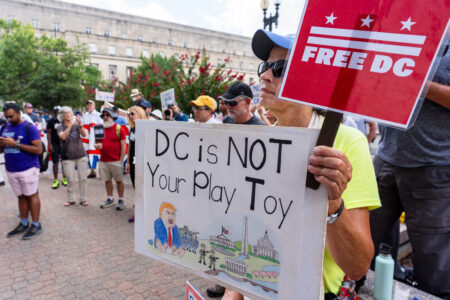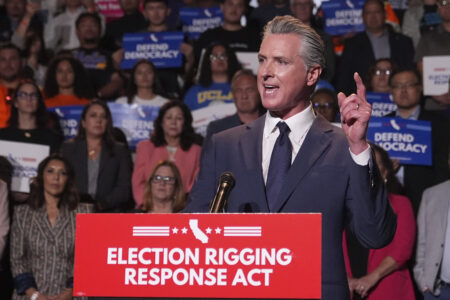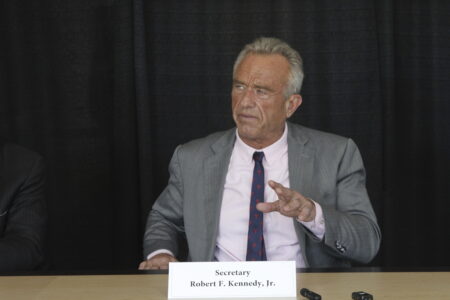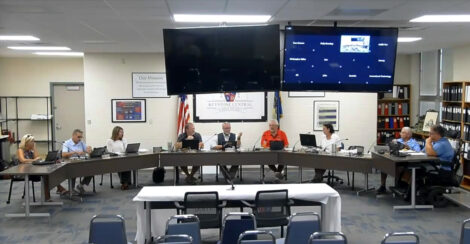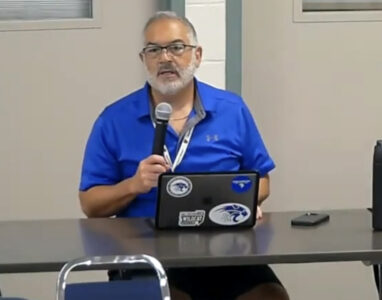KC board talks cellphone use in schools; May consider overall ban in the future
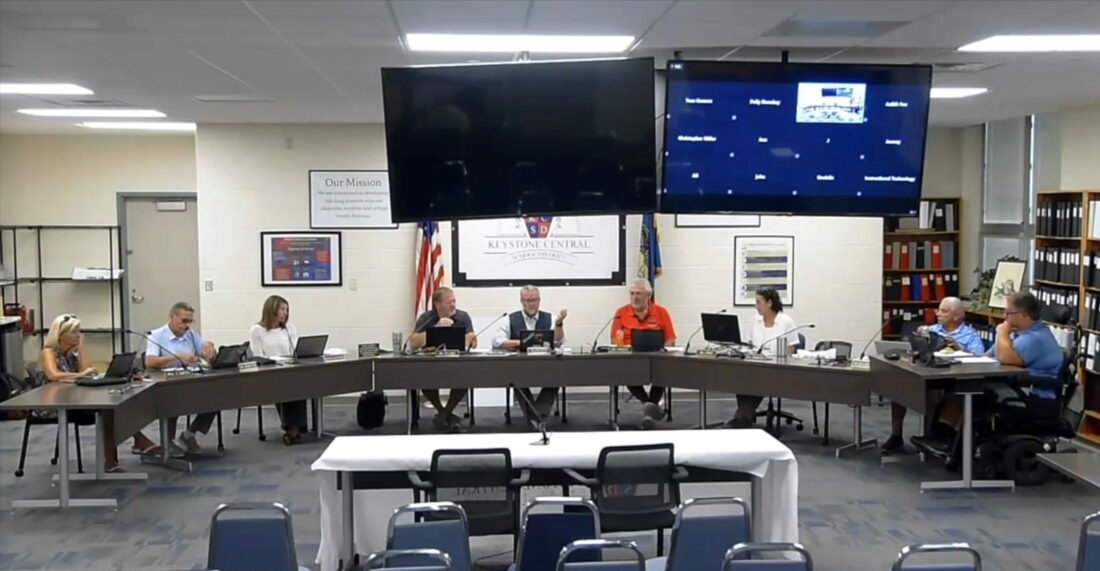
PHOTO PROVIDED Members of the Keystone Central School District Board of Directors listen as Superintendent Dr. Francis Redmon, center, talks about steps the district would need to take in order to change its cellphone use policy.
MILL HALL — The discussion about cellphone use by students in schools dominated a large portion of the Keystone Central School District Board of Directors’ discussion about possible updates to student handbooks for the 2025-2026 school year.
The issue was brought up by Board Vice President Butch Knauff, who has previously expressed concerns about students — particularly in high school and middle school — using phones inappropriately throughout the school day.
He further expressed concerns the middle school handbook updates would allow for students to wear hats or hoods while at school.
He noted security concerns in regards to that part of the handbook.
“We’re spending a lot of money on security issues throughout the schools. With the hats and hoods on it could make it difficult to identify someone in the camera system,” he said.
The use of cellphones, he said, is something the district has talked about for years.
“I think it’s time we do away with cellphones and earbuds and electronic devices that distract from school,” he said.
Superintendent Dr. Francis Redmon said to change the handbooks regarding these items would require more conversations with staff, students and parents prior to implementation.
Board Member Polly Donahay, who prompted the question of making these changes, said her understanding was that phones should be off and away.
Assistant Superintendent Dr. Randy Zangara offered clarification, citing page 40 of the high school handbook.
“It does state that the electronic devices must be turned off prior to entry of instructional areas,” he said. The exception to this, he said, is if an instructor wants to utilize phones in their lesson.
“There’s not a 100 percent ban there,” he said.
Knauff pointed out each student has a laptop which can often be used in place of a phone for specific lessons.
“They don’t need the phone. They’re a distraction,” he said.
He further noted the different ways teachers could individually interpret the current policy and offer more or less leeway than another.
He suggested entertaining a complete ban, otherwise the district would need to ensure there’s a clear understanding of the policy amongst staff to ensure everyone is on the same page.
“If we’re going to continue with what we’re doing, we’re going to have to ensure our teachers are using the policy and not allowing kids walking around heading to class with earbuds in and playing games on their phones,” he said. “Personally, I’d like to see them done away with.”
Zangara said the points being made were valid, but said that timing was an issue.
“Even the hoods and hats kind of shift because it’s a cultural thing,” he said. “Further discussions are warranted, that’s not a point of dispute.”
He said changing a rule so close to the beginning of a school year could create confusion and create an extra burden on staff to make sure students are following these new expectations.
Board Member Jeff Johnston agreed with Knauff’s stance on cellphones, but also understood Zangara’s reasons regarding a timeline to implement a new rule.
“We have to discuss that and, if we have to put it in, it has to be phased in. We get feedback from parents, teachers, students, everybody,” he said.
Board Member Dr. Bill Baldino also agreed with Knauff regarding electronics and not allowing hats or hoods to be worn in secondary schools.
“I fully agree with you, Butch, there shouldn’t be hats, hoods, cellphones or earbuds. I think we can make it a lot more complicated but to me that’s a quick fix. You can’t do these things. Period.”
Zangara reiterated the importance of having conversations with parents, staff and students prior to implementing a cellphone or electronics ban.
“A lot of school districts, when they do this, there’s conversations involved, parents involved, community involved and then that’s set out,” he said. “At this point in the game, they’re (staff) going to be here in a week.”
Knauff said he can live with the current electronics policy if it’s being followed.
“If we follow that policy to a T and every teacher is instructed to follow that policy to a T that’d be the first step,” he said. “Then you can work on it for next year. But that’s the first thing.”
Donahay asked if the administration could begin asking teachers their stance on the current cellphone policy.
Redmon said that would be part of the overall discussions regarding the policy.
“I think it’s definitely part of the work we’d have to do if the board decides the district is deciding to enter into a cellphone ban,” he said. “We need to gather information from teachers and parents and administrators.”

